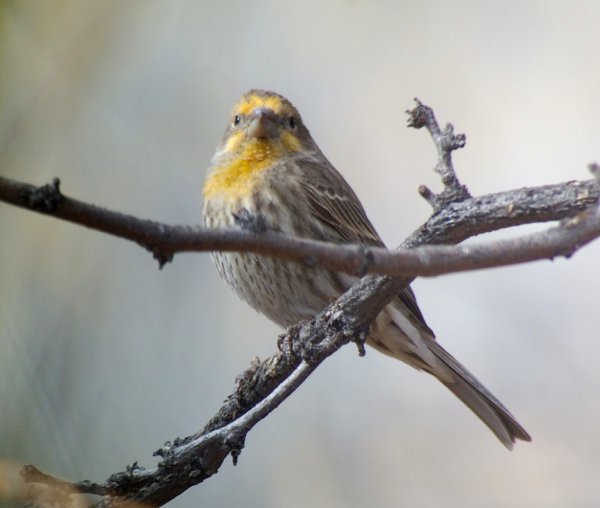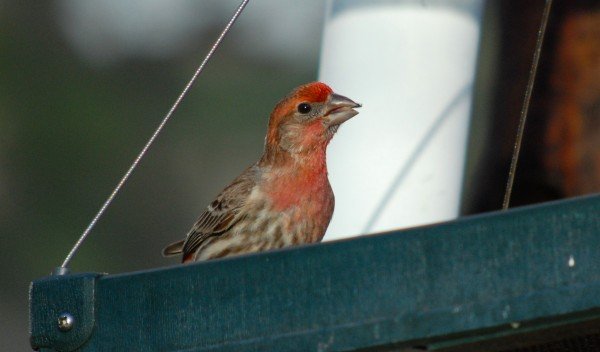
House Finches are common enough birds at most bird feeding stations. Below is how we are accustomed to seeing the males at the feeder:
The males are a bright reddish pink and stand out at the feeder. But sometimes House Finches get a little wonky. I was coleading a bird trip for the Winter Wings Bird Festival. Our trip stopped at that Tule Lake Visitor Center and we saw this:
It’s a yellow variant. I quickly took the above photo with my iPhone through my Swarovski scope. House Finches can go weird in all sorts of ways. I’ve even had an orange one show up to my feeders in the northern US. So, what’s up with that? Why are some yellow and some orange when they should be pink? It’s all based on food.
There are three types of carotenoid pigments found in natural foods the finches eat that can affect male House Finch color: beta-carotene which produces yellow to orange colors, isocryptoxanthin which produces orange colors and echinenone produces red colors. (Please don’t ask me how to pronounce those). So birds that are not bright pink are not getting enough of the echinenone and some research shows that there are regional differences in carotenoid pigments found in wild/natural foods throughout the US. You might be more likely to found a yellow House Finch in the southwestern US.
These birds appear to do just fine, though some studies suggest yellow males are not as attractive to females as the pinker ones but they are overall in good health. If you like to read more, check out this article.















Have you ever seen q House Finch with “Ears”?
A sweet, bonded male & female House Finch pair, often come to my window feeders.
I noticed the female has what appear to be ears.
They’re bilateral & uniform.
Can this happen?
I would be very interested in any information you have about it.
I can send you multiple pictures of her from different angles and even a video of the couple.
Thank you